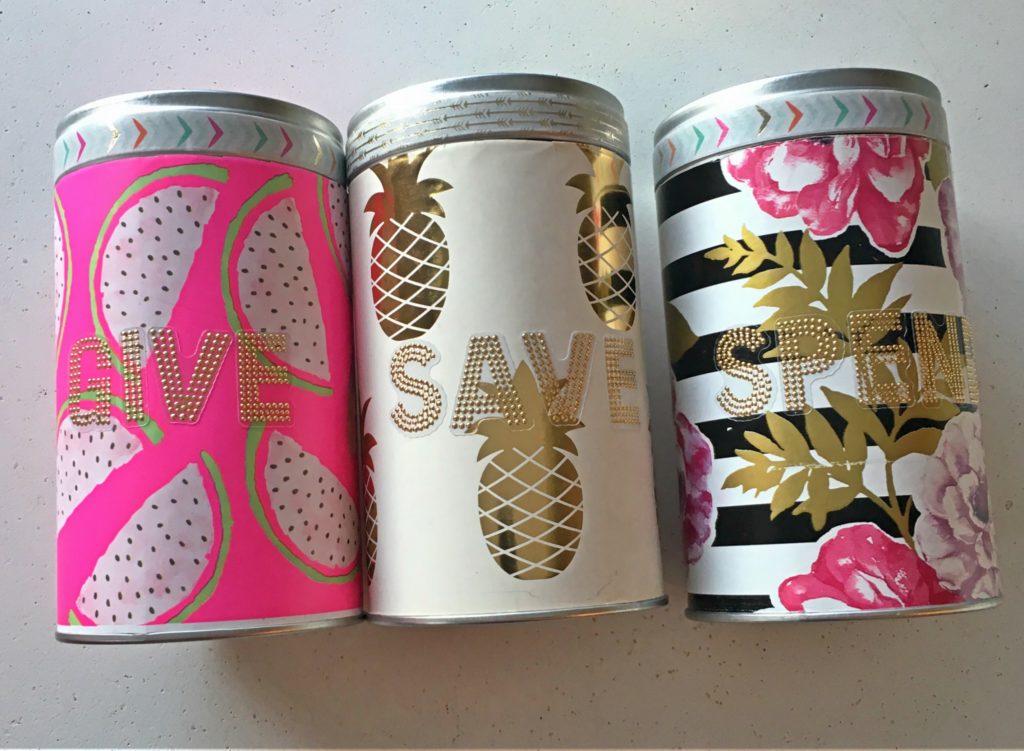Special to the Financial Independence Hub
(Part 2)
When we had kids, both my wife and I discussed how to be intentional about teaching them about money. We’ve read books, articles, and looked at resources online. We wanted to be sure that they knew what a healthy relationship with money looked like in the areas of faith, family, and work ethic. We wanted them to know what a truly wealthy life looks like.
Our plan to do this was to model handling our money responsibly. And we wanted to give them real-world opportunities where they could begin to make financial decisions on their own, at first in a supported environment, and later on, independently.
With our first child, our daughter Gemma who’s getting ready to turn 5, we’re in stage 1 of teaching her to be a wise manager of her money. She’s being supported, taught and encouraged to make good choices with her money. She’s also being given lots of opportunity to fail with money. Also known as non-catastrophic failure, it is an essential element to learning, and one many kids are being robbed of by overprotective parents.
So how are we doing it? By teaching her the basics of how to give, save and spend…in that order.
Give
Gemma has been on commission for about four months and it’s been going quite well. Every Saturday she gets paid $1.50 in six quarters. Some people may think that’s cheap, but I prefer frugal.
My wife decorated three old loose tea containers with fancy wrapping paper and glitter letters to store her bounty.
The first thing we do when she gets paid is put 25₵ in the Give container. As people of faith, we tithe a percentage of our income to our local church and other charities. We want to instill the value of generosity and gratitude in our children, and so before we’ve spent or saved, this money goes into the Give fund.
Recently, we went out and used her money (she has stockpiled $4) to buy some gifts for an Operation Christmas Child shoebox. Before we went out I showed her a short video and we talked about how some kids don’t have much money, and how we can give to them. It was awesome to see her picking out the items for the box and growing her giving muscles right before my eyes.
Save
The next place money goes is to her Save container. It gets three quarters, the most of any jar. Before she’s touched any cash to spend, this “invisible money” disappears into her saving fund so she doesn’t even miss it.
We want to impress upon her the value of delaying gratification. We want her to experience the joy you get from passing on the temporary good feeling of spending now, for the amazing feeling of satisfaction and self-control you have when you buy something you’ve been saving up for.
Right now, she’s not saving for a car, university, or a down payment on a house. We’re not that crazy. She saves for larger purchases that she wants but can’t buy on impulse and that we’re not going to cave in and get her on a whim.
A Teachable Moment
A few weekends ago, she and I were hanging out and she let me know that she had seen a Spirit Riding Free toy that she wanted to buy. (For those who don’t know, it’s a Netflix show, which is pretty solid for little kids. It’s definitely better than Peppa Pig or the Wiggles. Seriously, people pay to produce the Wiggles? If you have grown kids thank your lucky stars you got to watch Mr. Dress-Up or Sesame Street.)
Anyway, I didn’t know anything about this toy but my wife had given it the green light. We had a little time to kill and decided to check out Wal Mart to see if they had it. As she walked up and down the aisles in anticipation, I was expecting a $30 toy, small, doll-sized. You know the drill if you have daughters.
As we strolled the aisles, to my horror I saw a huge, expensive looking toy matching her description. It was sitting on the top shelf. Sure, I could’ve ignored it and pretended I didn’t see it. But this was a teachable moment.
“Is this the one you were talking about honey?” “THAT’S IT!!” she exclaimed. “That’s the Spirit Riding Free toy I wanted!!!” Such glee. And, yet, this glee came with a hefty price tag … 70 bucks!!
Now G launched a very successful startup last summer and the IPO generated a whopping $125. It was a pop-up lemonade stand at the end of our driveway, in which her uncle is the majority owner. None the less, it was very successful.
She decided she wanted to take some of her lemonade money and use it for the purchase. Right in Wal-Mart I checked her account balance and watched her eyes light up when she saw she had enough.
Money Lessons Learned
We walked out of Wal-Mart that day, Spirit Riding Free in hand, with several important lessons learned:
1.) If there’s not enough money in the account, you can’t make the purchase. This would be sage advice for every adult. Instead, many of us turn to credit cards, HELOCs, or financing to buy what we want, rather than saving up and paying cash.
2.) If you want to buy stuff you love, you need money: this sounds really self-evident, but it’s not. North Americans are more in debt today than ever before. This message is not being received by the vast majority of us.
3.) If you want more money to buy the things you love, working will get you there. Your income is your biggest tool when it comes to being financially successful. And working doesn’t just mean the daily 9-5 grind, either. Passive income can be a big part of your overall income. Whether it’s buying things you want with cash or saving more money for the future (retirement, vacation, child’s university, etc.), having a larger income makes things easier. G understands this. As we were walking out of the store she was already planning on having another lemonade stand next year. She gets it. If you want more money, you need to work.
Spendy McSpenderson
The final container is Spend. She puts two quarters in it and she can spend it on whatever she wants. She usually lets it build up a bit and then goes and buys something cheap at the dollar store. Even this is a lesson.
If she buys something that is cheaply made but doesn’t cost much, it may break or she may lose interest in it after a few weeks. I’m hoping she’ll learn the value of taking her time to save. We’re working to impress on her that spending a little more to get something of higher quality and for which the satisfaction will last longer, is better than the quick impulse purchase.
Passing on Values
All these little money lessons are allowing us to pass on our values about money, faith, work ethic, and life for that matter, to her. These lessons aren’t just for kids.
They say we learn best what we teach. As a teacher, I can say that is truer than true. We all can benefit from growing in generosity, delaying gratification, and saving for the future.
As she gets closer to the magic age of 5, I hope that we’ve done a good job of teaching her about the things that really matter, the truly important things in life.
And I hope that when the day of her ACTUAL wedding comes, I can look up at her and think that we did an ok job raising an amazing kid.
 Matt Matheson is a husband, father and assistant principal with a passion for personal finance. He writes at www.methodtoyourmoney.ca where he focuses on methods and mindsets to inspire your finances. You can follow him on Twitter @method_money and on Facebook @methodtoyourmoney
Matt Matheson is a husband, father and assistant principal with a passion for personal finance. He writes at www.methodtoyourmoney.ca where he focuses on methods and mindsets to inspire your finances. You can follow him on Twitter @method_money and on Facebook @methodtoyourmoney





This is super! You have no idea what kind of impact you are making on your daughter. She will be teaching others some day. Love that you have incorporated giving into the equation. Well done!
Susan,
Thanks so much for your comment. I can only hope that one day my daughter will teach her kids and perhaps others the values we’ve passed on to her. Thank you for your kind words and encouragement. I appreciate it so much! -Matt